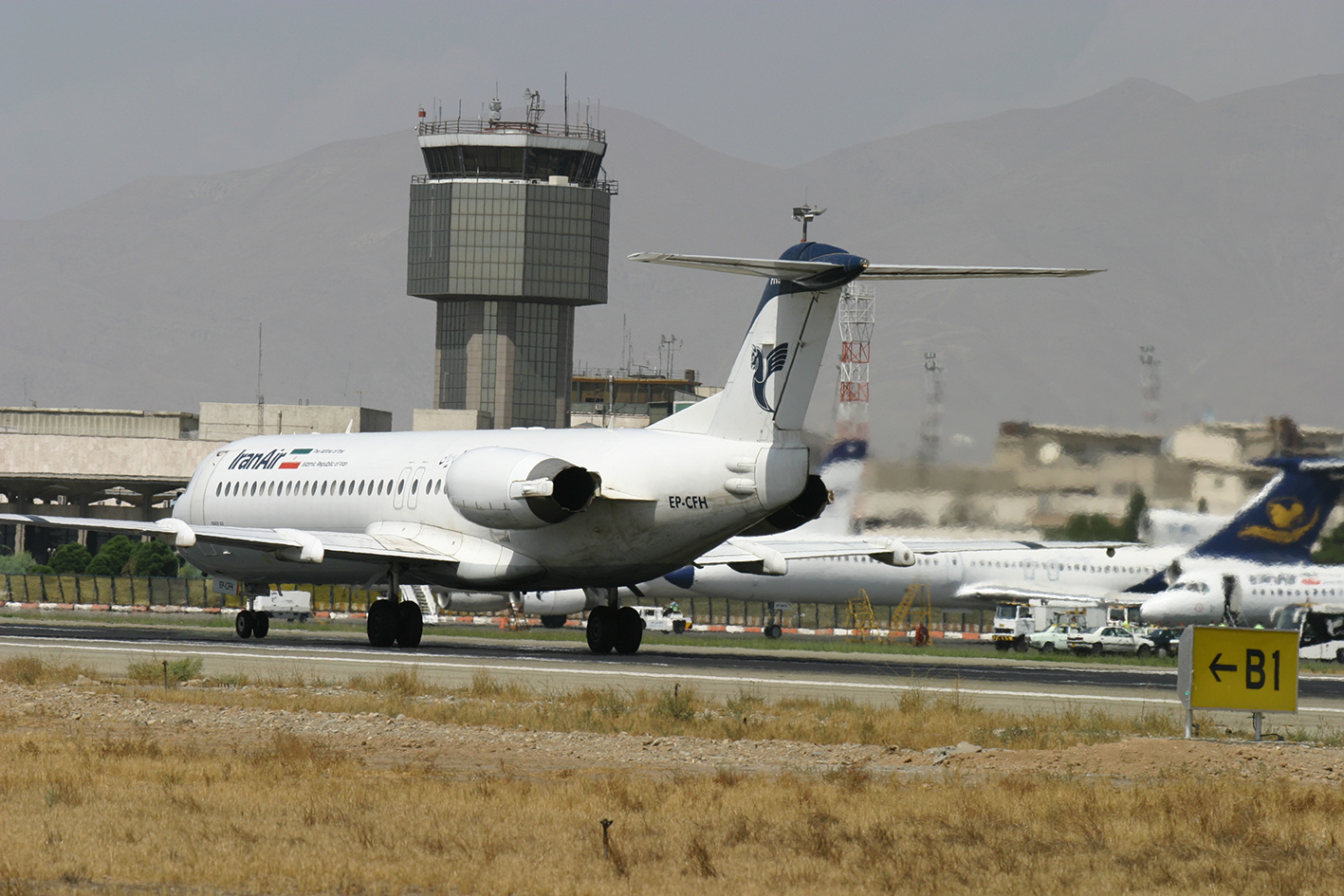Iran’s airports are witnessing strong growth in aircraft movement as well as passenger and cargo transportation, according to Iran Airports Company's statistics shared with Financial Tribune.
IAC is an arm of Ministry of Roads and Urban Development managing 54 airports across the country.
The company registered more than 387,000 takeoffs and landings during the 10 months to January 19, 2017, which shows a 16% rise compared with the similar period of the previous year.
More than 48 million passengers and 459,500 tons of cargo were transported during the period, indicating an 18% and 12% rise respectively over last year’s corresponding period.
As for domestic flights, 317,472 takeoffs and landings were registered during the 10 months, up 20% year-on-year. As many as 38.2 million passengers and 281,511 tons of goods were also transported to domestic destinations, showing a 23% and 20% growth respectively.
On the international front, aircraft movement recorded a 1% decline to register 69,552 takeoffs and landings. Also, 9.8 million passengers and 178,000 tons of cargo were transported to and from overseas destinations, indicating a 2% increase each.
Tehran’s Mehrabad International Airport was Iran’s busiest airport during the period. It recorded 111,303 takeoffs and landings during the period, indicating a 19% rise. The airport handled 13.8 million passengers and 93,800 tons of cargo, up 21% and 18% respectively.

Mashhad International airport (60,500 takeoffs and landings) and Tehran’s Imam Khomeini International Airport (45,700 takeoffs and landings) ranked second and third respectively.
IAC's data show 319,137 international flights flew over Iran’s airspace during the 10-month period, registering an 11% rise.
Post-Sanctions Boom
Following the lifting of sanctions in January last year, as part of the nuclear deal between Iran and the world powers struck a year earlier, international airlines have started, resumed or increased flights to and from Iran.
In October, KLM resumed flights between Amsterdam and Tehran after a three-year hiatus. The resumption, part of a planned Air France-KLM comeback, includes four return flights from the Dutch capital per week.
Paris-Tehran flights also resumed earlier than the previously scheduled date in January.
British Airways resumed direct flights to and from the Iranian capital on September 1 after four years.
Lufthansa has been flying non-stop once again between Munich and Tehran early July. With this new connection, Lufthansa Group is expanding its daily offer with a Boeing B747-400 from Frankfurt after the removal of anti-Iran sanctions.
A Thai Airways’ plane landed in Tehran early October. The flag carrier’s launch of four flights per week substantially increased the number of Iranian arrivals to Thailand and likewise Thai visitors to the Islamic Republic.
Late-June Kazakhstan’s Air Astana launched a new non-stop flight from Almaty to Tehran. Flights operate three times a week (Tuesdays, Thursdays and Saturdays) and will be served by Embraer 190 aircraft.
In January, AirAsia X, the long-haul low-cost arm of budget carrier AirAsia, said it is adding more flights to Tehran from Kuala Lumpur six months after resuming its flight to the capital of Iran.
Many other global carriers are also planning to either establish new flights to Iran or increase their presence.
Cyprus' flag carrier Cobalt Air announced in November that it would begin regular flights to Tehran as of next year (2017), having secured a permit from Cypriot authorities to launch the route.
Austrian Airlines has announced that it will be operating four weekly flights from Vienna to Shiraz starting on July 2, with a stopover in Isfahan. This comes in addition to the existing services of up to 14 weekly flights to Tehran and four weekly flights to Isfahan.
Iran’s Mahan Air is planning to operate direct flights to Barcelona as of June, with plans to launch direct flights to Madrid in the near future.
The Islamic Republic is also in talks with Air Canada, Air India and Korean Airline to establish a direct flight.
Air Transport Gains in Popularity
Figures show the government has been able to increase the share of air travel in overall passenger transport.
According to the Ministry of Roads and Urban Development, 18.9 million Iranian passengers travelled by air in the last Iranian year (March 2015-16), up 8% over the previous year. Air transport is predicted to grow 22% this year.
This is while road passenger transport has seen an average annual decline of 5% over the past three years, which indicates a shift from road to air.
As part of Iran’s sixth five-year development plan (2017-22), the annual number of passengers transported via air is stipulated to reach 48 million.
The plan also envisages an increase of Iran’s share from international flights passing through the region. Officials are planning to turn the country into a hub of international flights by developing the area surrounding IKIA to create an airport city.


